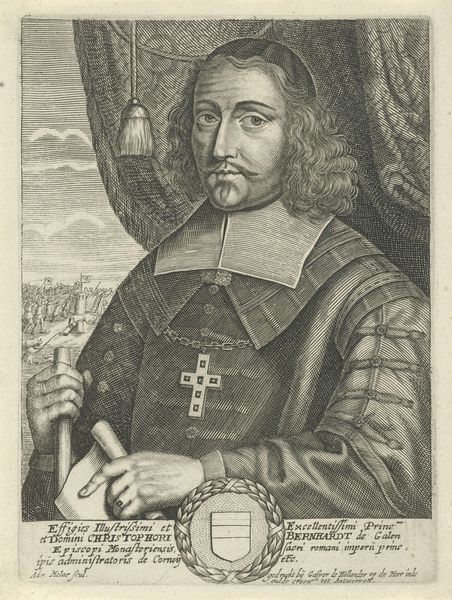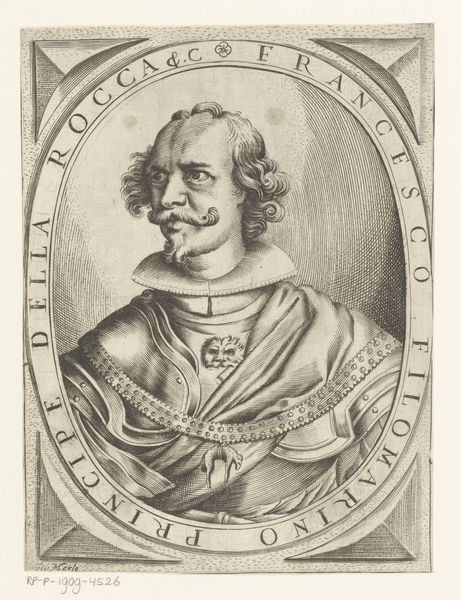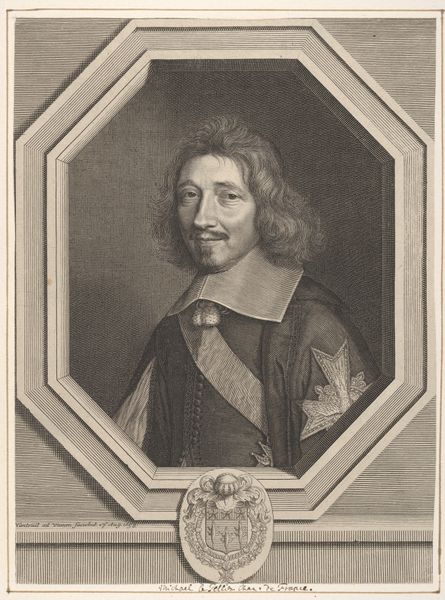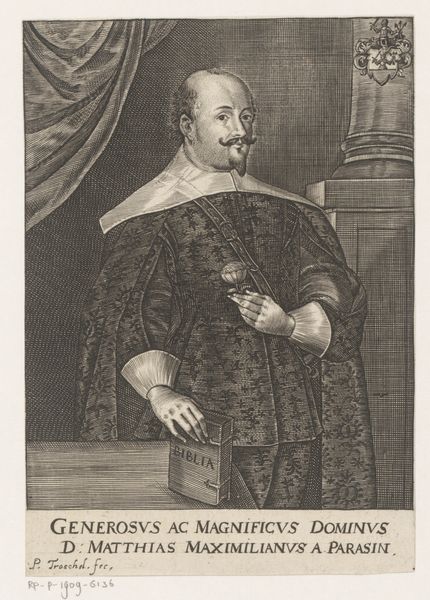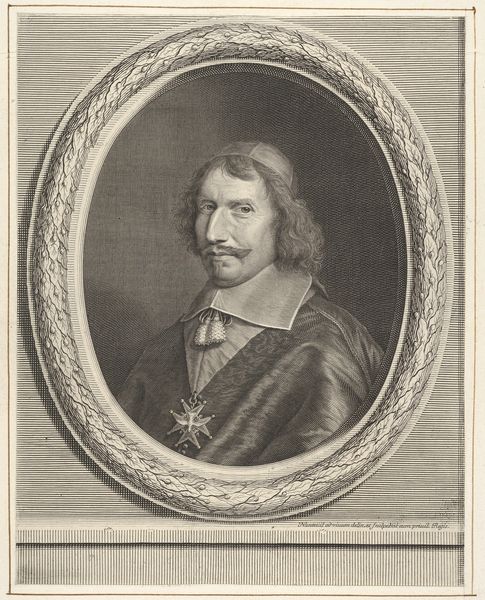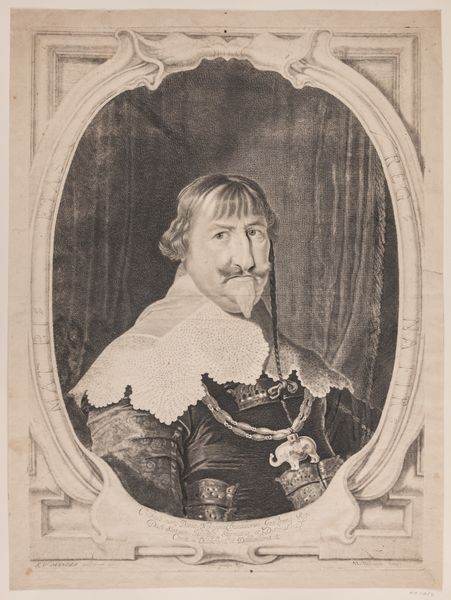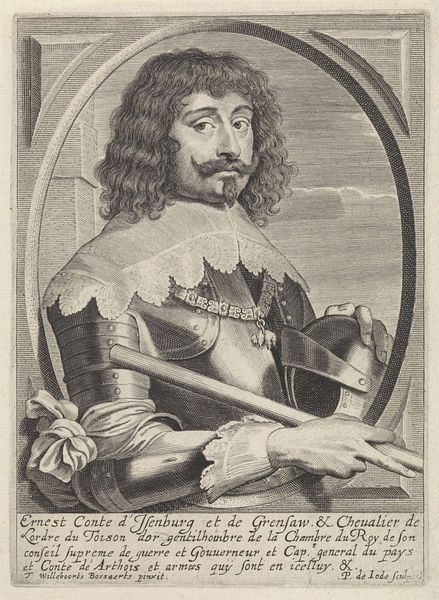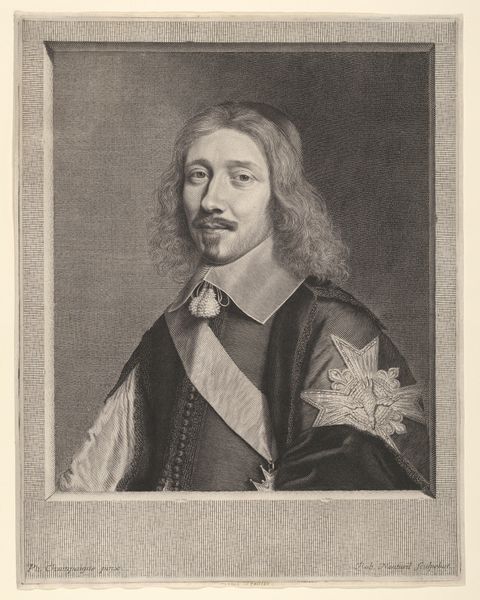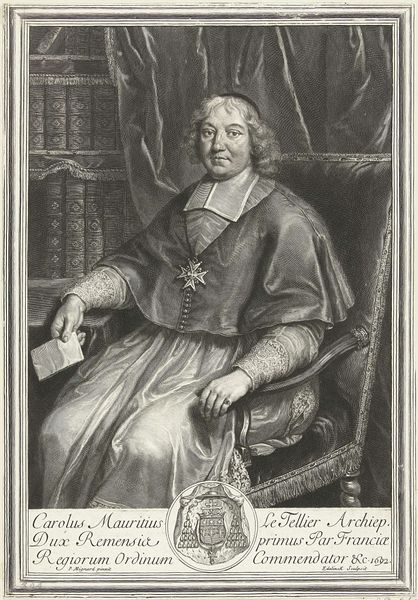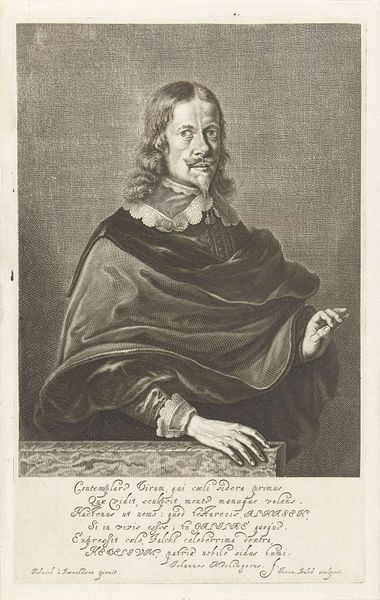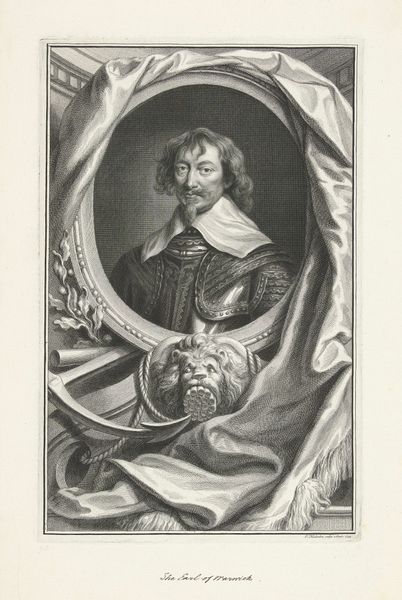
engraving
#
portrait
#
baroque
#
history-painting
#
engraving
#
realism
Dimensions: height 293 mm, width 200 mm
Copyright: Rijks Museum: Open Domain
Curator: Here we have "Portret van keizer Ferdinand III," an engraving by Cornelis Bloemaert, dating from before 1657. What's your immediate reaction? Editor: My eye is drawn to the crown and the globe, these potent symbols of power casually displayed. There's a sort of cool detachment to the emperor’s gaze, a certain remove, that suggests his authority is unshakeable. Curator: And rightfully so, no? Think about the backdrop against which Ferdinand III reigned, specifically, the tail end of the Thirty Years’ War, an exceptionally brutal conflict largely driven by religious and political factions seeking increased power. What message does a carefully crafted royal portrait like this send to a fragmented polity in the Holy Roman Empire? How did it reinforce or challenge dynastic ambitions? Editor: Absolutely. That crown, the orb – they aren't just decorations. They represent not only worldly dominion, but divine sanction, concepts deeply embedded in the visual language of European monarchies at the time. Even his laurel wreath indicates both military victory and imperial ambition. Curator: Indeed. Look closely at the composition. Bloemaert uses fine lines to give texture to fabrics and suggest depth, to underscore the gravity and the imposing presence of the sitter. This emphasis on regal bearing becomes itself a crucial propaganda instrument for the ruling classes. It seeks to assert unwavering strength precisely when such things are deeply imperiled. Editor: It's also fascinating to consider the act of creating the engraving itself, transforming an existing painting into a reproducible format. Who was this print intended for? And how might different social groups receive an image so directly laden with absolutist symbolism? Curator: The print form allows a much wider dissemination of this highly strategic message – projecting stability but, ultimately, perhaps reinforcing growing resentment toward the established order for people directly impacted by social upheavals and persistent warfare. The artistic intent becomes a site for competing interpretations of political power and societal anxieties. Editor: So, a visual declaration of authority, but potentially fraught with unspoken tensions beneath the surface. The image tries to fix a sense of eternal rulership amid a shifting and dangerous world. Curator: Precisely. Thank you for illuminating these critical intersections. Editor: A worthwhile effort to interpret symbols, power, and lasting societal implications.
Comments
No comments
Be the first to comment and join the conversation on the ultimate creative platform.
